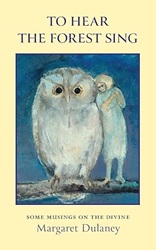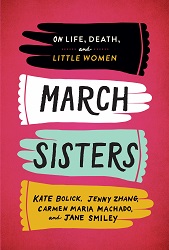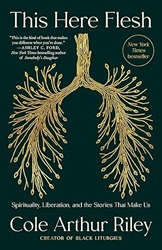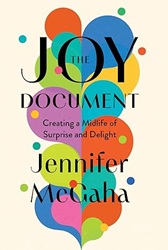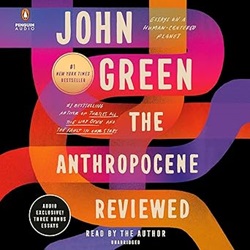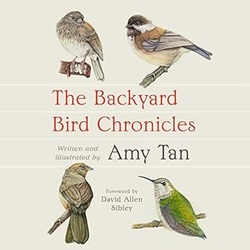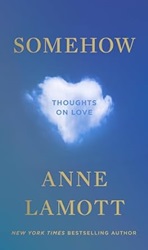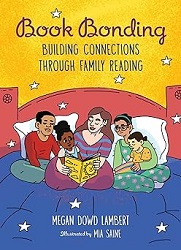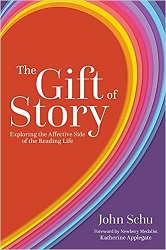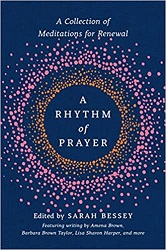Review of To Hear the Forest Sing, by Margaret Dulaney
Some Musings on the Divine
by Margaret Dulaney
Listen Well Publishing, 2016. 229 pages.
Review written July 3, 2025, from my own copy, purchased via Amazon.com
Starred Review
I always seem to enjoy “Musings” and put a whole category for them on Sonderbooks. But when I’ve finished a book of musings, it’s usually hard to explain why I enjoyed reading them so much. The title of this book hints that there will be plenty about nature, and the subtitle hints that there will be thoughts about faith and about God.
As usual, I think I’ll fall back on giving you a few quotations to give you the flavor. In this book, the essays were originally broadcast on a spoken word website, so each one is separate. But they do present a unified, thoughtful voice.
Here’s a part from the Prologue explaining the title:
Every early teacher who had me in her class – and most of them were very kind and patient – wrote the same comment on my twice-yearly reports: “Margaret is a well-meaning girl, but her head is always out the window.”
“Oh, but it makes so much more sense out there!” I would answer in retrospect now, if I could, “Trees don’t confuse, birds don’t baffle. Give me simple, clear things to learn like the roll of the hills, the turning of the seasons, and I will be as learned as the rest of them. Give me a field, a patch of woodland to read and I will unlock the wisdom of the ages, break the shackles of ignorance! Of course my head is out the window! You have to be in the woods to hear the forest sing!”
I loved this part about making art (both music and writing):
It’s love that propels us to create, not cynicism.
After many years of wrestling with my own frustrations, I have concluded that our gifts are just that, they are gifts. We might possess the power to postpone their use, try and hide from them, but I suspect we only manage to shade ourselves for a time from the intensity of our passions. This love of ours still shines brightly all around, and waits for us with the focused attention of a beloved dog. When we finally step out from under the protection of our denial, our loves will leap and bark and joyously circle us, too long neglected, racing forward and dashing back to us, hurrying us along on our illuminated path….
Perhaps all that this day really requires of us is to step out from under the cover of our resistance, step out and into the warmth of our loves. To say, today I will do this because I love it. I will write what I love, sing what I love, listen to what I love, read what I love, practice what I love, speak what I love.
I will love what there is to love today, and leave the details to a wiser hand.
And here’s a bit about giving and receiving advice.
As I age, I am more drawn to those who speak honestly to me. No matter how bitter the pill, no matter how long it takes to work, I do want this medicine. Give me your truth and allow me to determine whether it is the right remedy for me. Time will reveal its efficacy.
I would rather hear a truth from a friend, and adjust my behavior accordingly, than meet the reactions of cold consequence which could be much more harsh.
Maybe it’s time to turn that old line from the prayer book around to read, “Speak now and try never to hold your peace.” Speak if you must, absolutely. Speak and then step back. Give room. They are God’s to teach, God’s to hold, God’s to heal.
And yes, God is mentioned in this book. I also love this one:
This has me thinking that I might have discovered my next daily prayer. Dear God, please disabuse me of my calcified notions of how you work in this world. Surprise me, please.
Please don’t ever let me think that I am finished.
That should give you an idea of what you’ll find in this book. I enjoyed musing with Margaret Dulaney.
Find this review on Sonderbooks at: www.sonderbooks.com/Nonfiction/to_hear_the_forest_sing.html
Disclosure: I am an Amazon Affiliate, and will earn a small percentage if you order a book on Amazon after clicking through from my site.
Disclaimer: I am a professional librarian, but the views expressed are solely my own, and in no way represent the official views of my employer or of any committee or group of which I am part.
What did you think of this book?
